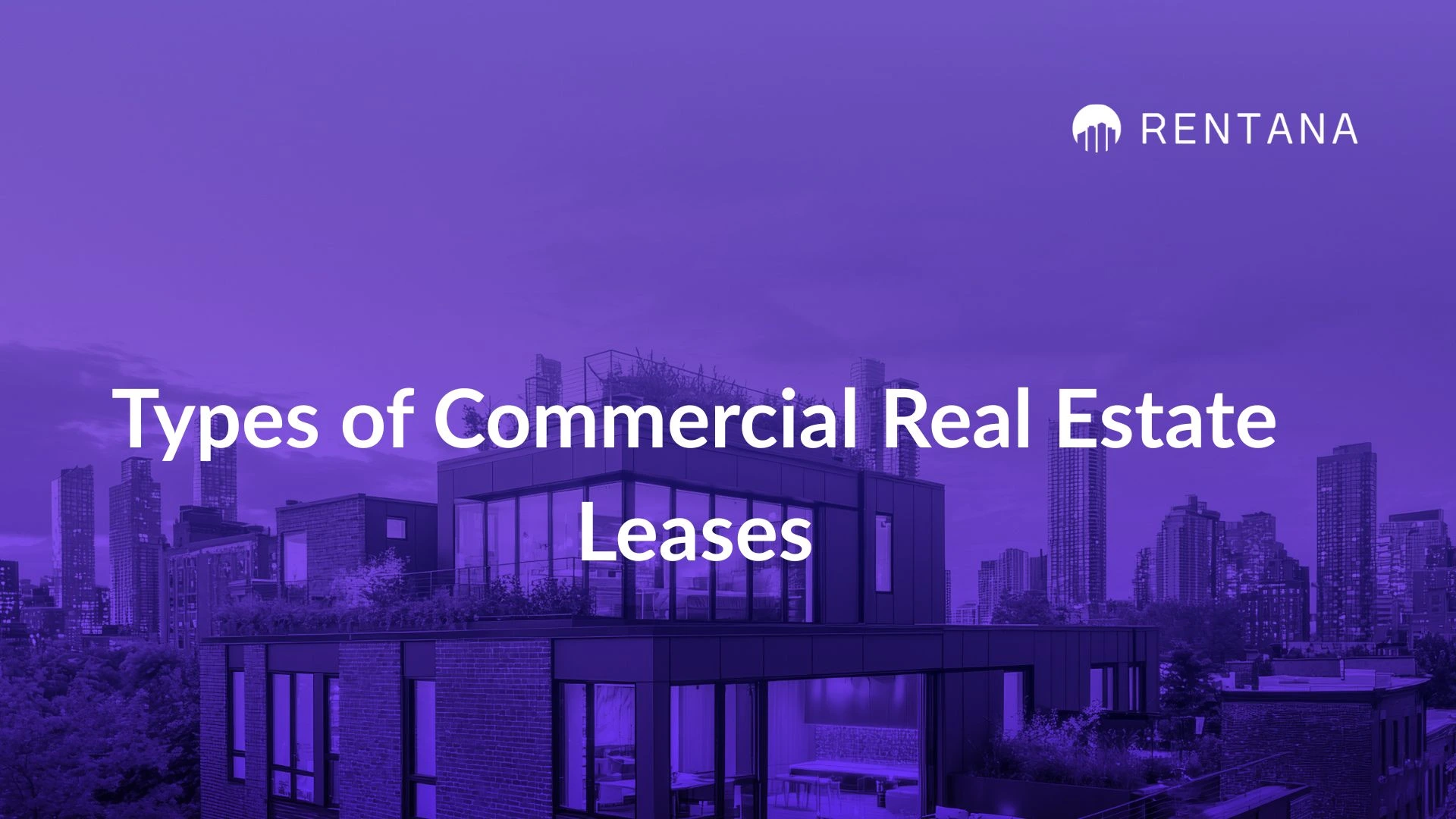




When you walk into a coffee shop, a clothing store, or even an office building, there’s more going on behind the scenes than just business as usual. Every one of those spaces is tied to a lease agreement that shapes how rent is paid and who covers which expenses. Unlike renting an apartment, commercial leases come in different types, each with its own rules for costs like taxes, insurance, and maintenance.
Understanding these leases isn’t only for lawyers or big corporations. For landlords, it can mean steady income and lower risks. For tenants, it can mean the difference between a deal that helps their business grow and one that drains their budget. In this guide, we’ll break down the main types of commercial real estate leases so you can see how they work in practice, with clear examples that make them easy to understand.
Related: 9 Best AI Tools in Commercial Real Estate

A commercial lease is a legal agreement that allows a tenant (usually a business) to rent space from a property owner. This space could be an office, a retail store, a restaurant, or even a warehouse. Just like a residential lease, it spells out how much rent is paid and for how long.
But commercial leases go a step further by defining who pays for extra costs like property taxes, insurance, utilities, and maintenance.
The key difference between commercial leases and residential leases is the level of complexity. Residential leases are fairly standard: tenants pay rent, maybe a portion of utilities, and the landlord usually covers the rest. In commercial real estate, leases are much more flexible.
Landlords and tenants can negotiate who covers specific expenses, how long the lease lasts, and even whether rent is tied to the tenant’s sales. Because of this, two businesses in the same building might have completely different lease terms.
Also, Commercial real estate leases in the U.S. are typically much longer than residential leases, often running 5 to 10 years or more, compared to the usual 12 months for apartments. This longer term gives landlords stable income and gives businesses the security they need to operate and grow in one location
Understanding these leases is important for both sides. For landlords, the right lease structure can reduce financial risk and ensure steady income. For tenants, the details of the lease can impact whether their business thrives or struggles. For example, a new café might want predictable costs each month, while a landlord might prefer to pass on some expenses like rising property taxes. If either party doesn’t fully understand the terms, they could end up locked into an agreement that doesn’t work for them financially.
In short, commercial leases are the foundation of how businesses occupy real estate. Knowing the different types and how they shift costs is the first step to making smart decisions, whether you’re renting out a building or moving your business into one.
Related: How Do Companies Keep Track of Expiration Dates on Leases?

A gross lease is one of the simplest types of commercial real estate leases. In this setup, the tenant pays one flat rent amount each month, and the landlord takes care of most of the property’s expenses. This usually includes things like property taxes, building insurance, and maintenance costs. The tenant only has to worry about paying rent and sometimes utilities for their specific space.
For tenants, the biggest advantage of a gross lease is predictability. They know exactly how much to budget for rent each month without worrying about surprise costs. For landlords, it can make leasing more attractive to small businesses that want stable expenses, but it also means they carry more of the financial risk if costs like insurance or taxes go up.
Example: Imagine a small law firm renting an office in a downtown building. They pay $3,000 each month under a gross lease. The landlord uses that money to cover the property taxes, building insurance, and cleaning services for common areas. The law firm benefits from steady costs, while the landlord keeps the property running smoothly.
Gross leases are common in office buildings and some retail spaces, especially when tenants want the peace of mind that comes with a single, all-inclusive payment.
A net lease shifts some of the property expenses from the landlord to the tenant. Instead of paying one flat rent that covers everything, tenants in a net lease agree to pay for certain costs on top of their rent. The amount of responsibility depends on whether it is a single, double, or triple net lease.
For landlords, this is one of the types of commercial real estate leases that reduce financial risk because tenants cover many of the ongoing costs. For tenants, these leases often come with lower base rent, but the extra expenses can add up.
Example: Imagine a retail shop renting space in a shopping plaza under a triple net lease. They pay $2,000 in base rent, plus their share of the property taxes, insurance, and maintenance for the building. The landlord benefits from reduced costs, while the tenant enjoys a lower rent amount than they would under a gross lease.
Net leases are common in retail and office properties, and the triple net version is especially popular for long-term tenants like banks, pharmacies, and fast-food chains.
Top Pick: What is the 1 Percent Rule in Real Estate?
A modified gross lease is like a middle ground between a gross lease and a net lease. In this setup, the tenant pays a fixed base rent along with some of the operating expenses. The landlord and tenant agree in advance on which costs are shared and which are covered entirely by one party.
This type of lease gives both sides flexibility. Tenants like it because they still get a predictable base rent while having more control over the costs they pay. Landlords like it because it shifts part of the expenses without giving up too much responsibility.
Example: A marketing agency signs a modified gross lease for office space. They pay $5,000 a month in rent, plus their own utility bills and janitorial services. The landlord still covers property taxes, building insurance, and major maintenance. Both sides benefit because the costs are clearly divided, and the tenant doesn’t face as many unpredictable expenses as with a triple net lease.
Modified gross leases are common in multi-tenant office buildings, where different tenants might use varying amounts of utilities or services.
A percentage lease is common in retail, especially in shopping centers and malls. With this type of lease, the tenant pays a base rent plus a percentage of their monthly or annual sales. The idea is that the landlord shares in the tenant’s success, so rent increases when the tenant’s business does well.
This is one of the major types of commercial real estate leases that benefits tenants. For tenants, the benefit is usually a lower base rent, which helps keep costs manageable in slower months. For landlords, the upside is that they earn more if the tenant’s sales are strong. It’s a win-win setup when the business is in a location with high foot traffic and growth potential.
Example: A clothing store signs a lease in a mall where they pay $2,500 a month in base rent plus 5% of their monthly sales once they pass $50,000. If they have a big sales month, the landlord benefits too. If sales are slower, the tenant only pays the base rent plus a smaller percentage.
Percentage leases work well for businesses where sales can grow significantly with the right location, like restaurants, boutiques, or specialty shops.
An absolute net lease, sometimes called a bondable lease, is the most tenant-responsible type of lease. In this setup, the tenant not only pays rent, taxes, insurance, and maintenance but also covers major repairs and replacements. That can include things like fixing the roof, replacing HVAC systems, or even structural repairs. The landlord essentially has no ongoing responsibilities during the lease term.
For landlords, this type of lease offers complete financial predictability and very little risk. For tenants, it can be a heavier financial commitment, but it often comes with very long lease terms and prime locations. Tenants that sign absolute net leases are usually large, stable companies that can handle the costs and want control over the property.
Example: A national pharmacy chain leases a free-standing building under an absolute net lease. Beyond paying rent, they also take on all costs for property taxes, insurance, routine maintenance, and even structural repairs like replacing the roof if needed. The landlord enjoys steady income without expenses, while the tenant gains long-term control of the property.
Absolute net leases are less common but are typically seen in deals with big-box retailers or nationally recognized tenants where stability is almost guaranteed.
Related: The Best AI Tool for Rental Market Analysis by Zip Code
A ground lease allows a tenant to lease only the land, not the building on it. In most cases, the tenant is responsible for building their own structure, maintaining it, and paying rent for the land itself. These leases are usually very long-term, often 50 to 99 years, because tenants need time to make back their investment in building construction.
Ground leases belong to the types of commercial real estate leases that benefit bothe landlords and tenants. Ground leases are attractive because they keep ownership of the land while still earning rent.
For tenants, they offer the chance to develop prime locations without having to purchase the land outright.
Example: A fast-food company signs a 60-year ground lease on a plot of land along a busy highway. They build their restaurant, pay rent on the land, and cover all costs for the building they put up. At the end of the lease, ownership of the building usually reverts back to the landlord along with the land.
Ground leases are common for restaurants, retail stores, and gas stations that want high-traffic locations but prefer to avoid buying land.
A full-service lease is similar to a gross lease but goes a step further by including more services in the rent. Along with covering property taxes, insurance, and maintenance, the landlord also provides things like janitorial services, utilities, and common area upkeep. Tenants pay one all-inclusive rent amount, and the landlord manages nearly everything.
For tenants, the appeal is convenience. They can focus on running their business without worrying about surprise bills. For landlords, it means higher responsibility but also the ability to charge higher rent to cover the services.
Example: A tech startup rents office space in a modern high-rise under a full-service lease. Their monthly rent covers electricity, water, janitorial service, and even use of the building’s shared amenities. The startup benefits from predictable costs, while the landlord earns steady income with fewer complaints from tenants.
Full-service leases are common in large office buildings where multiple tenants share services and expect everything to be managed seamlessly by the landlord.
Don’t Miss: What is the 2 Percent Rule in Real Estate?
Commercial leases may come in different forms, but they all shape how costs are shared and how profitable a property can be. Whether it is a gross lease with simple terms or an absolute net lease that shifts nearly all responsibility to the tenant, knowing the differences helps landlords and tenants avoid costly surprises.
This is also where technology makes a real difference.
A platform like Rentana helps investors, owners, and managers track lease terms, and see how leases impact overall cashflow. By combining lease data with AI forecasting and portfolio analytics, Rentana makes lease management easier, clearer, and more strategic. With the right tools, understanding lease structures becomes a way to maximize performance and build long-term value.
The most commonly used lease in commercial real estate is the triple net lease (NNN). In this lease type, tenants pay for property taxes, insurance, and maintenance in addition to base rent. It provides stable income for landlords and predictable costs for tenants.
The three main types of commercial leases are gross leases, net leases, and modified gross leases. In a gross lease, the landlord covers all property expenses. In a net lease, tenants pay some or all operating costs. A modified gross lease splits expenses between both parties.
The triple net lease (NNN) is the most popular type of commercial lease. It gives landlords a consistent income stream while tenants take responsibility for most property-related expenses, making it a preferred choice for long-term, stable investments.
The triple net lease is often considered the best for landlords because it minimizes their expenses and provides predictable income. Tenants handle maintenance, insurance, and taxes, allowing landlords to focus on long-term property value and cash flow.